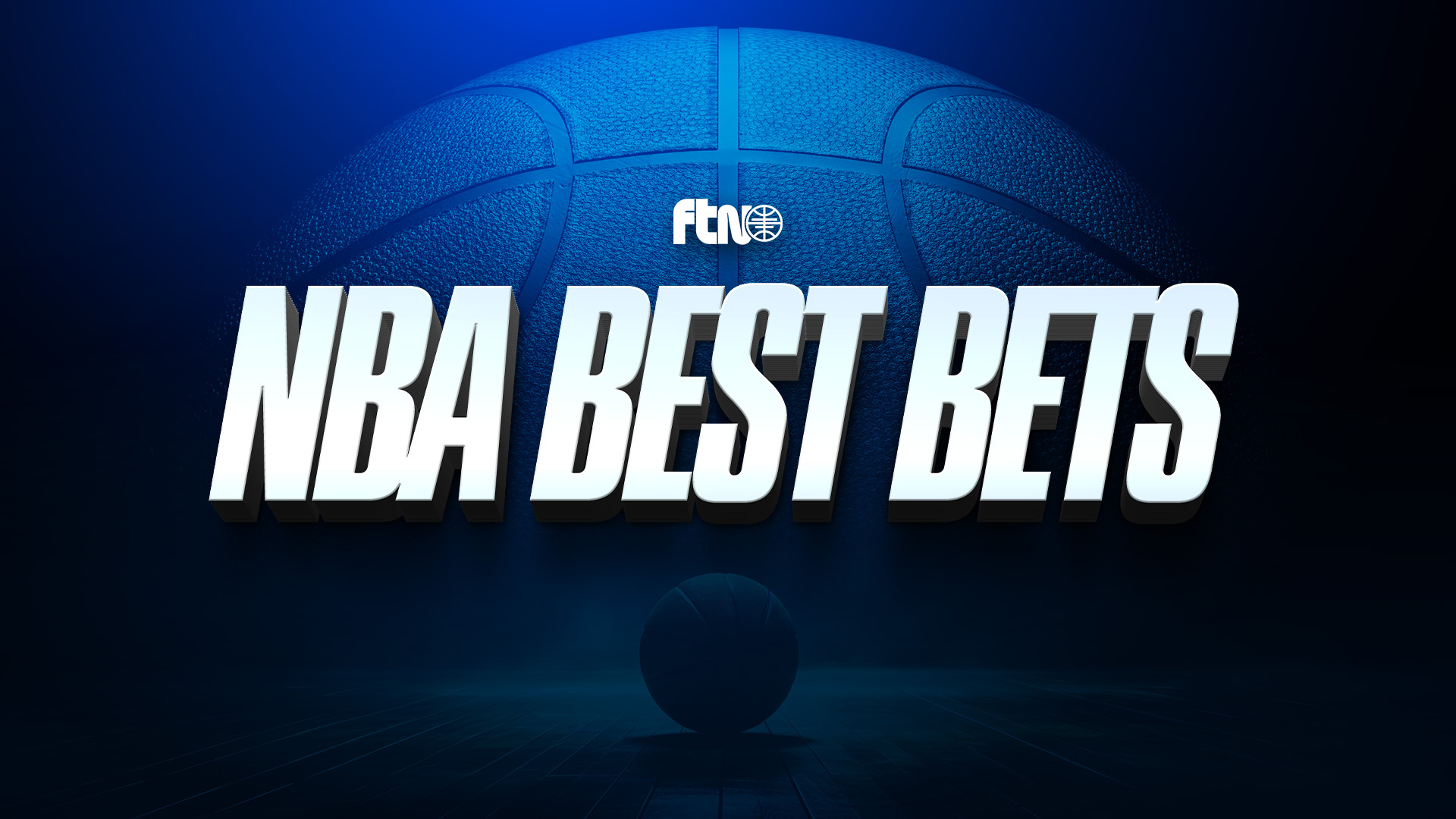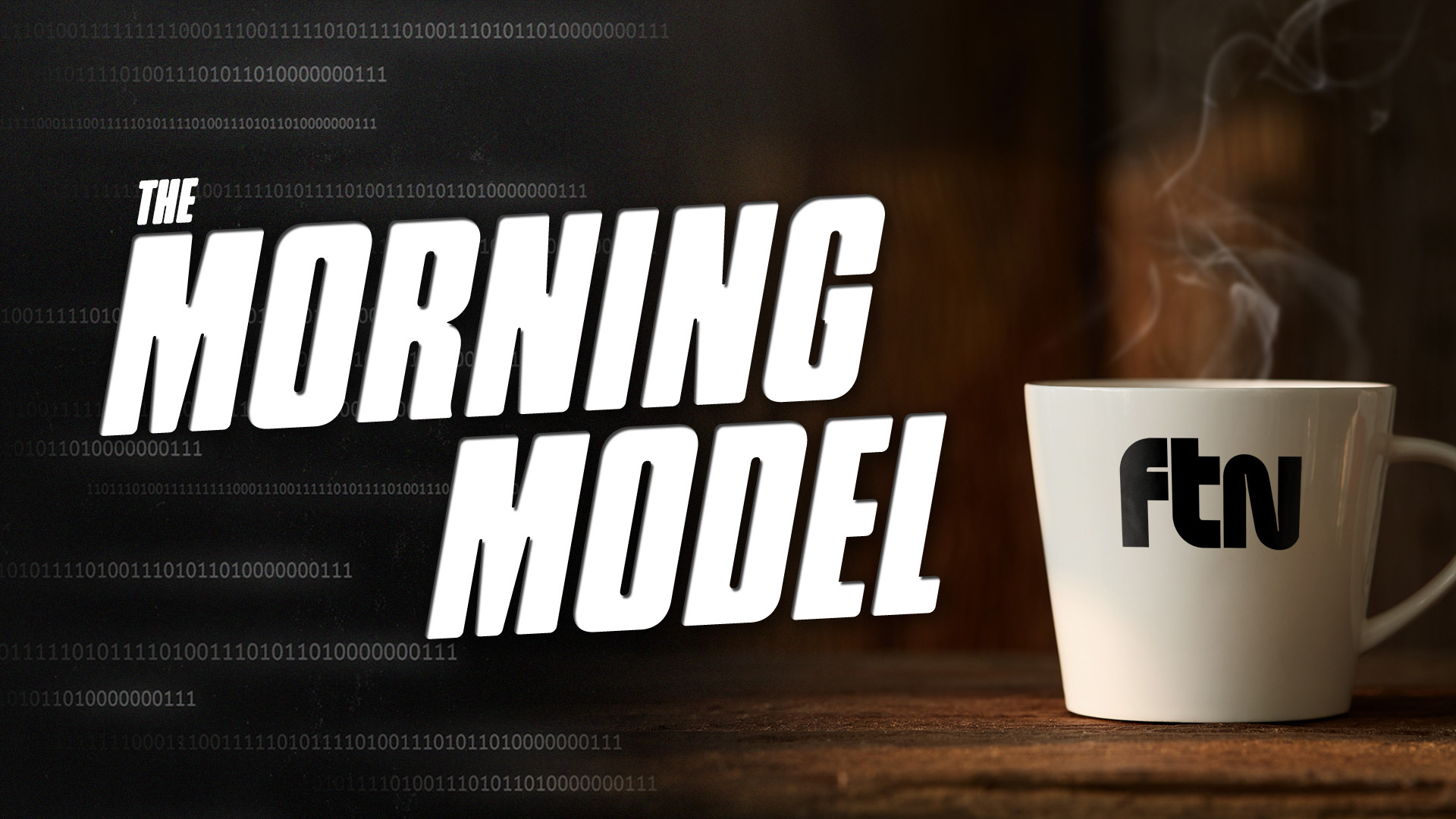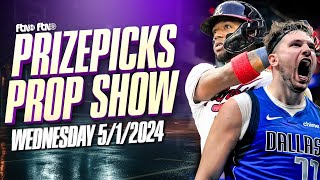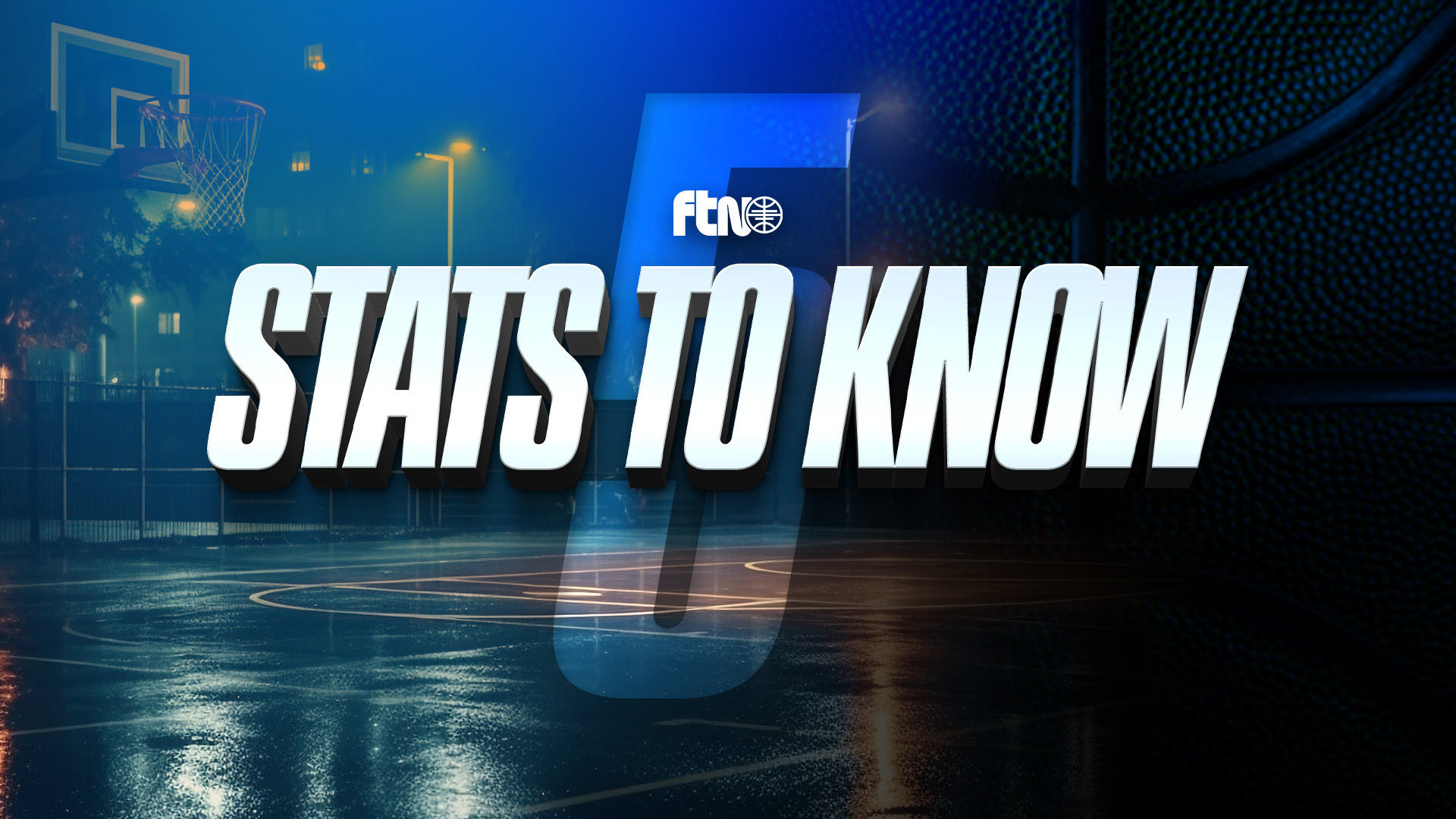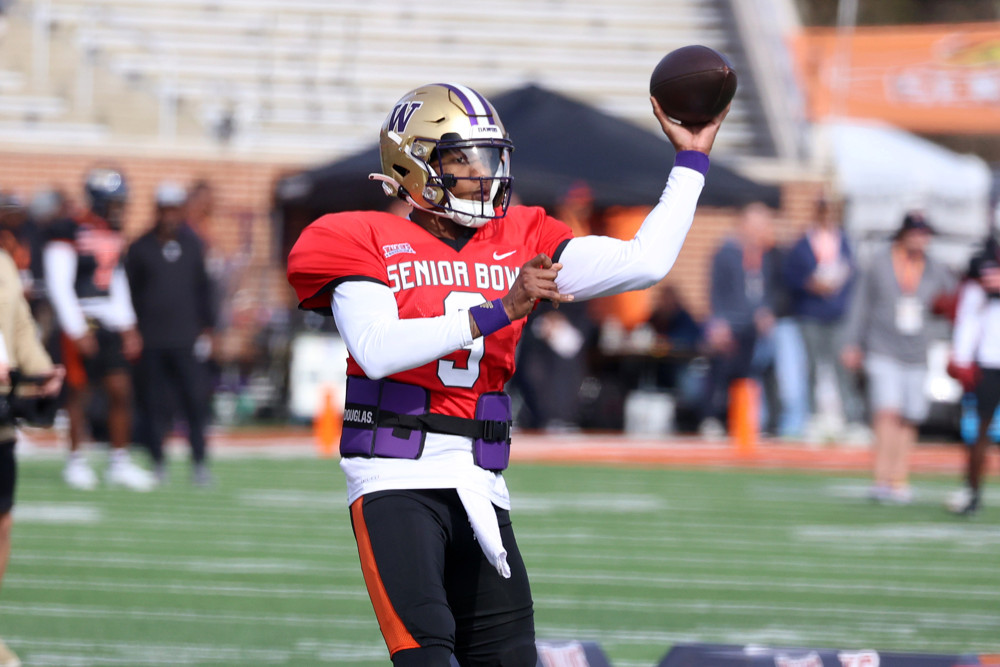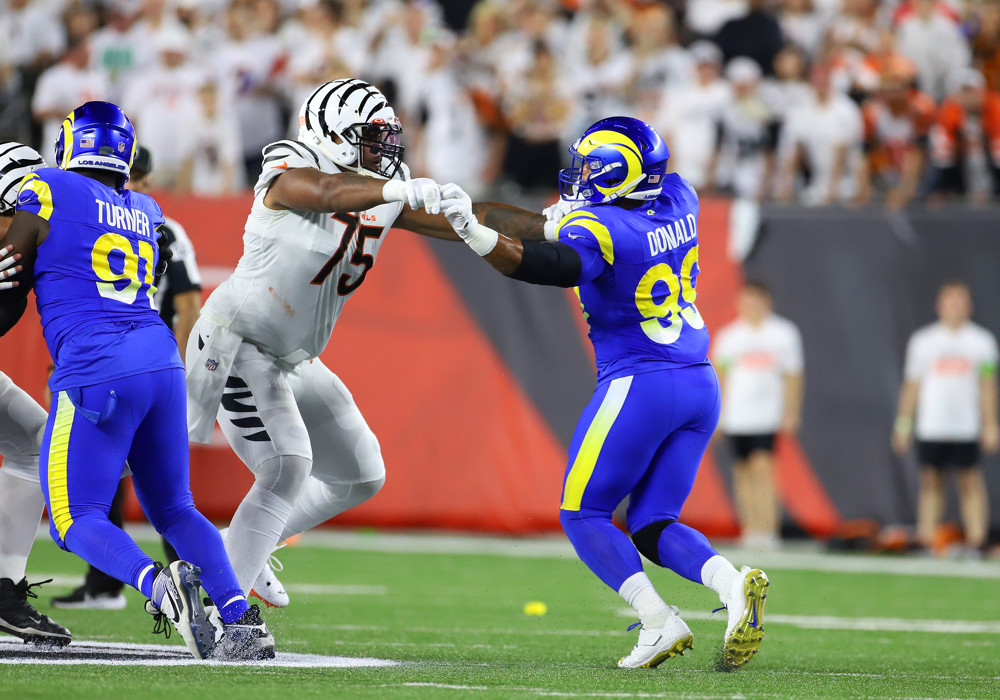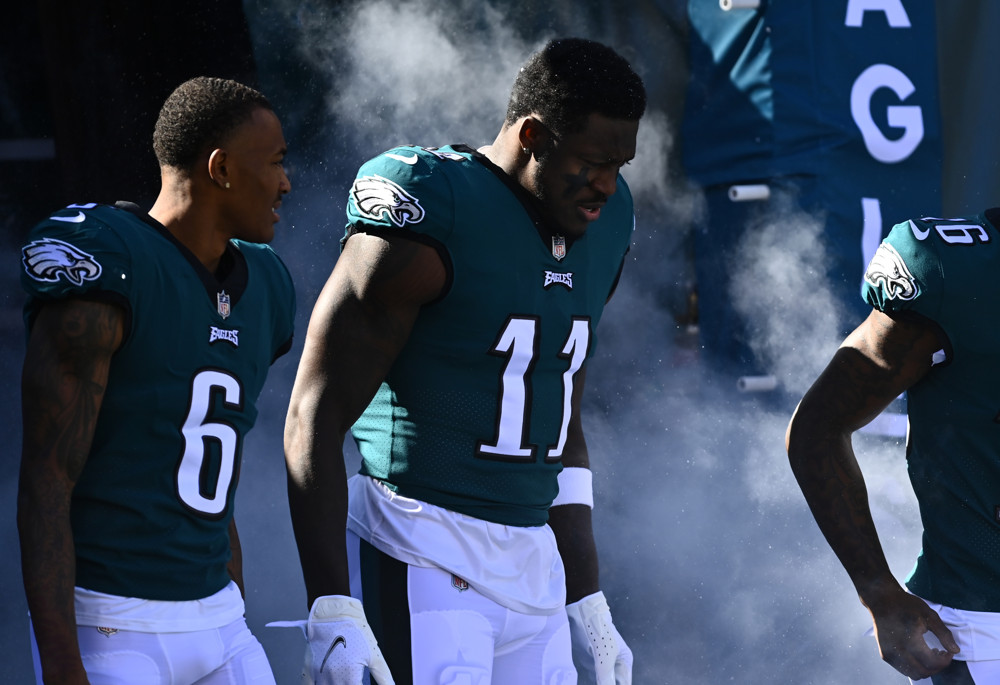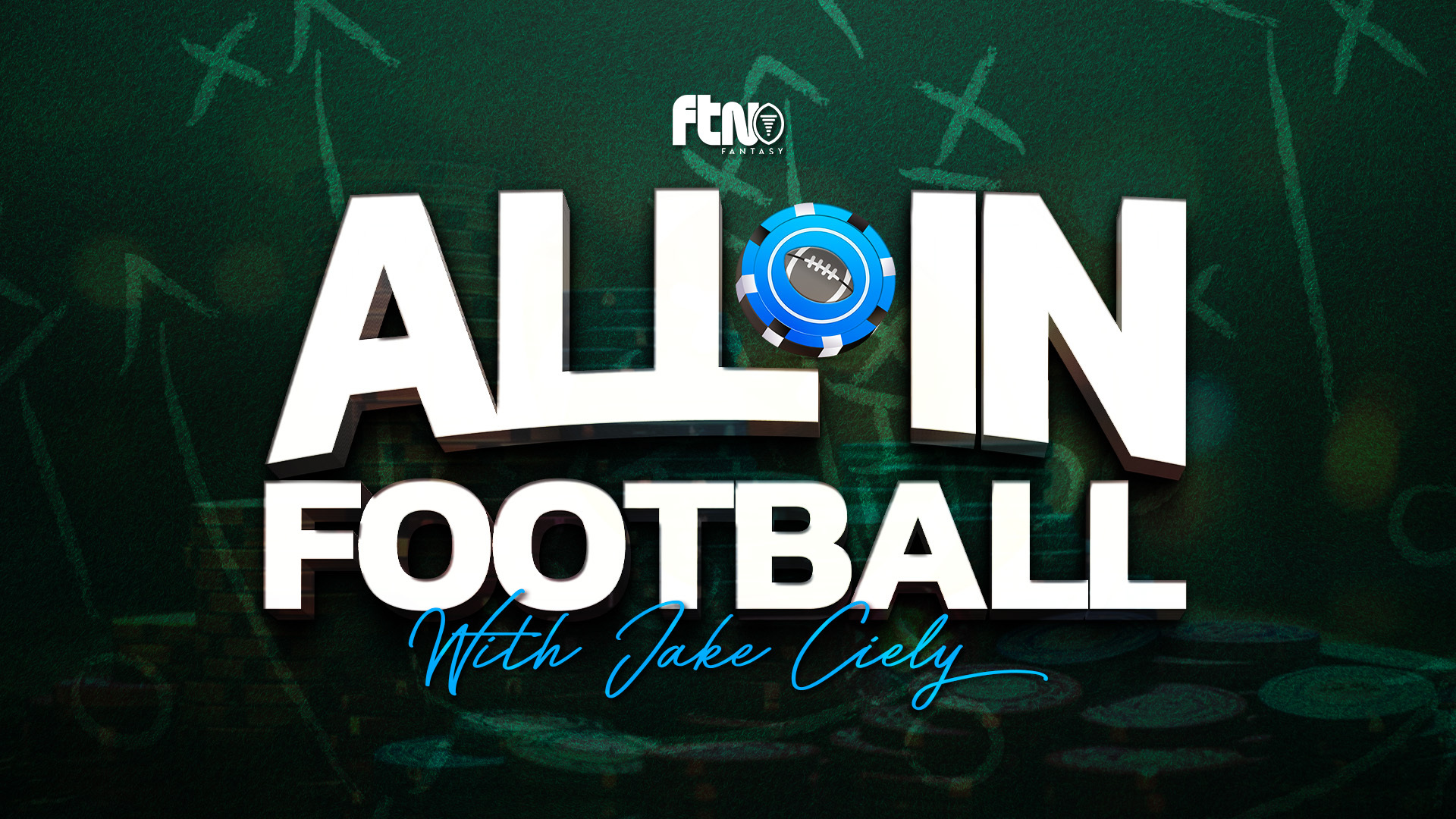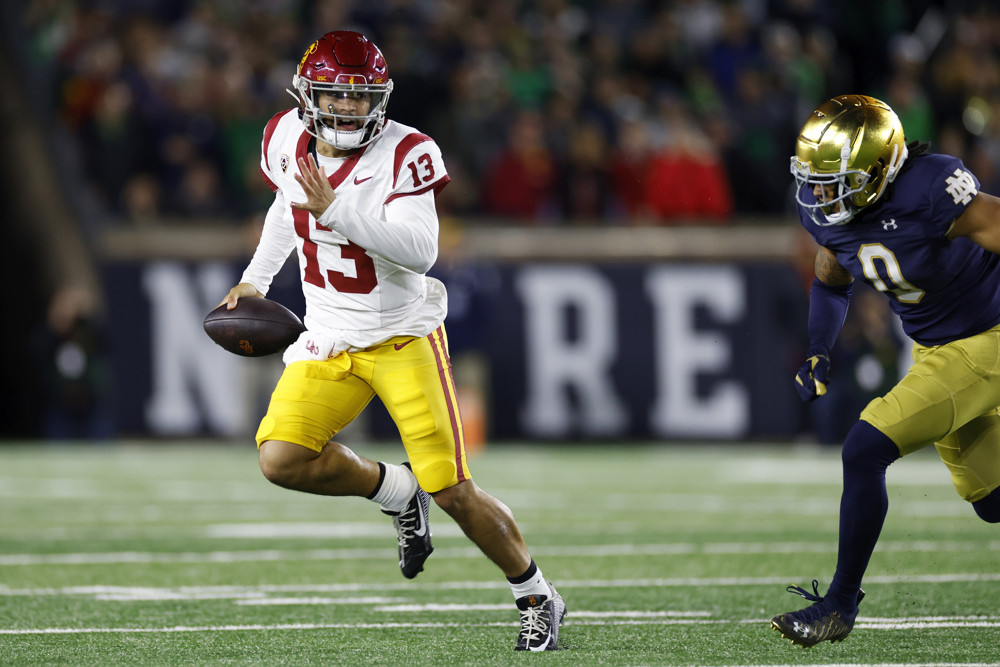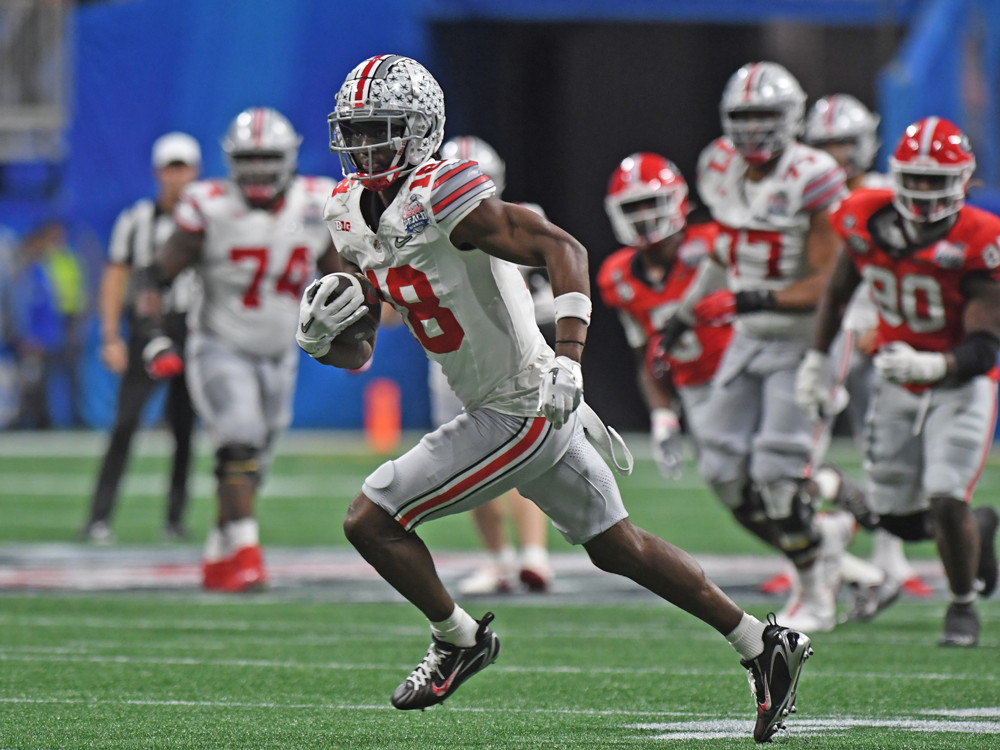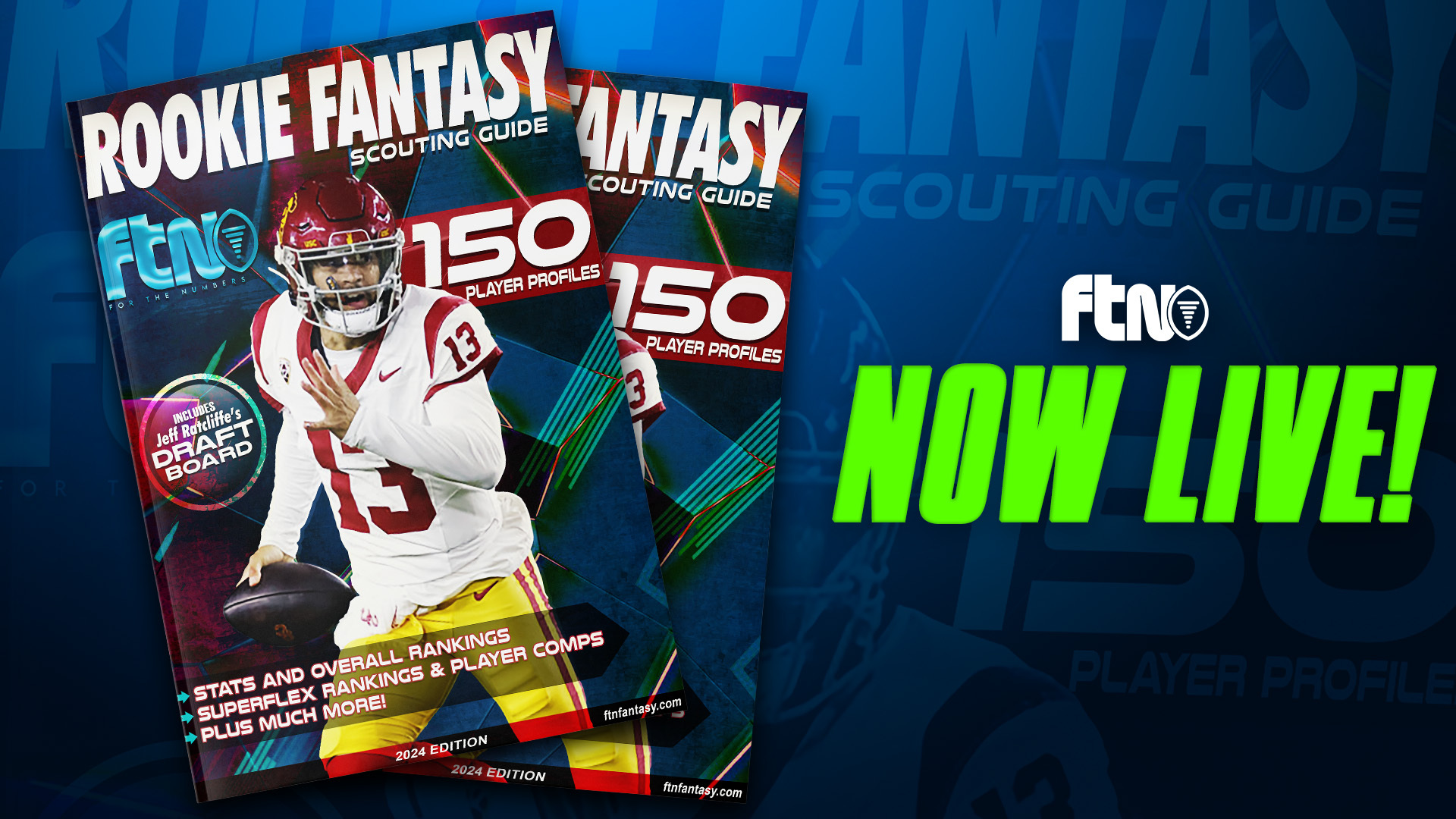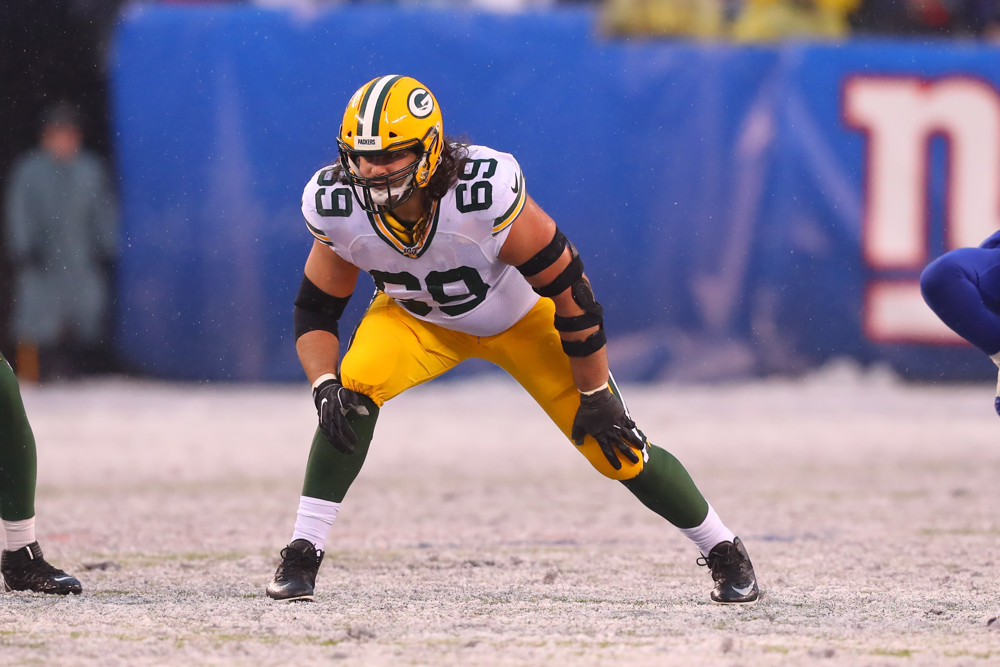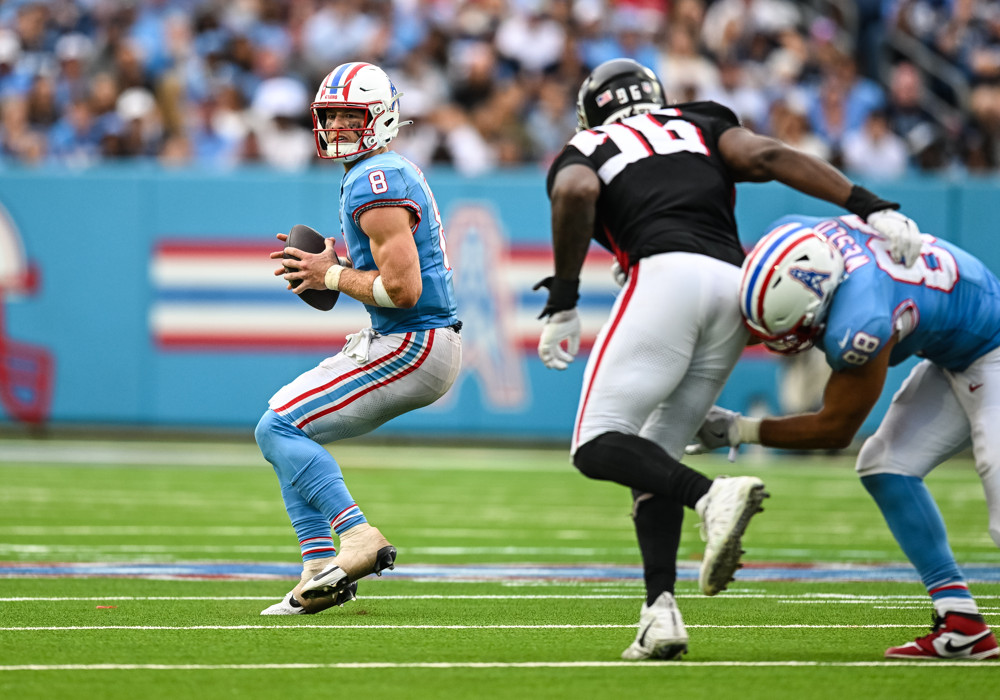
It is officially the start of July, which means rookie fever is beginning to hit fantasy leagues across the nation. As more and more fantasy managers begin to start drafting, these rookies will be pushed up the boards, largely overshadowing the sophomore class from last season. Taking advantage of the prioritization of rookies over established veterans is a great edge to attack in fantasy drafts, especially when it comes to second-year players. Oftentimes, these players are just as young as the rookies but have a full season of NFL experience and development under their belt.
One such player is Chicago Bears’ quarterback Justin Fields. Unfortunately, this rookie class lacks top-end quarterback talent, so the sophomore discount isn’t as steep at this position as it is for others. However, a rough rookie season has Fields at an extremely affordable price in early ADP. This article will provide an overview of Justin Fields as a rookie and how you should view him for redraft and dynasty leagues as we prepare for training camps to get underway.
Justin Fields, QB, Chicago Bears
The Bears traded up in the 2021 NFL Draft to select Justin Fields with the 11th overall pick. For much of his college career, Fields was seen as the likely 1B at the quarterback position in the NFL Draft to Trevor Lawrence, but ultimately, he slipped outside the top-10 and was the fourth quarterback selected in the class. In two full seasons as a starter with Ohio State (he transferred from Georgia after he was a backup during his freshman season), Fields completed 68% of his passes for 5,373 yards and 63 touchdowns with just nine interceptions. One concern with Fields leaving Ohio State was a question of his ability to see the field given his tendency to hold the ball and take sacks (56 sacks in 618 career passes) when his first option in the passing game wasn’t available. Regardless, Fields’ elite athleticism (4.51 40-yard dash) and college accuracy made him both a tantalizing fantasy and NFL quarterback.

Fields ADP in 2021 fantasy leagues came in as roughly QB15 thanks to a combination of the tantalizing rushing upside he possessed and due to the uncertainty of when he would get the starting job (more on that later).
What Went Wrong
Even though Chicago traded up for Fields, the Bears insisted throughout the summer that he wouldn’t be rushed on the field and that Andy Dalton would be the starting quarterback of the team. It was easy to laugh that off until it came to fruition. Dalton started the first two games of the season but suffered a knee bruise in Week 2 that gave way to Fields taking over as the Bears’ starter.
Unfortunately for Fields (and hopeful fantasy managers), not much went right from there. He would start 12 games in his rookie season, completing just 58% of his passes for 1,870 yards and seven touchdowns with 10 interceptions. He added 72 carries for 420 yards and two touchdowns as a rusher as well. The concerns people had for Fields in college also manifested in the NFL, with Fields finishing 10th in the league in sacks (36) despite missing a third of the season. Fields especially struggled in the red zone, completing just 5 of 22 passes in his rookie season. When the dust settled, Fields finished his first fantasy season averaging just 11.40 fantasy points per game, good for QB31.
The rookie quarterback was stuck playing for a lame-duck coaching staff that couldn’t design plays to his strengths behind an overmatched offensive line and missing what should have been his WR1 (Allen Robinson) for a significant stretch of the season. Fields ultimately missed five of the final seven games of the year due to a chest injury, an ankle injury and a positive COVID-19 test.
What Went Right
Despite the laundry list of negatives, Fields’ playmaking ability flashed several times throughout the 2021 season, including this clip that easily shows what Fields could do in the NFL even with a bad situation around him.
Fields rarely got time to throw in the pocket, but during the times he did he flashed an ability to accurately hit deep shots throughout the season.
During Weeks 8 and 9, Fields showed his immense fantasy potential in games against the 49ers and Steelers. In that stretch, Fields completed 64% of his passes for 466 yards and two touchdowns while carrying the ball 18 times for 148 yards and an additional score. Fields was the QB3 during those two weeks, averaging 22.72 fantasy points per game.
Ultimately, there was much more bad than good from Fields in his first full season in the NFL. While the tantalizing upside was on display in flashes throughout the season, his first year will be remembered for extremely volatile play and a bad supporting cast around the rookie.
Prognosis Entering 2022
Looking ahead to 2022, it’s hard to be that optimistic about Justin Fields. The Bears lost arguably their two best offensive linemen on a bad line (Jason Peters and James Daniels) and is hoping that a cast of inconsistent sophomore tackles and late-round dart throw offensive lineman can emerge to replace them. Additionally, five of Chicago’s eight most-targeted players in 2021 (including Allen Robinson) left in free agency. Chicago replaced them with a bunch of inconsistent veterans (Byron Pringle, Dante Pettis, Equanimeous St. Brown, Tajae Sharpe) and a 25-year-old third-round rookie (Velus Jones). Fields will once again be forced to rely heavily on Darnell Mooney (140 targets), Cole Kmet (93 targets) and David Montgomery (51 targets) in the passing game. All of these factors are baked into Fields’ current NFC ADP (130.08, QB17).
While there is a considerable amount of risk in drafting Justin Fields, there is also an immense upside. Few quarterbacks with Fields’ rushing ability fall outside the top 15 quarterbacks selected in fantasy football drafts. Fields shouldn’t be a player you confidently tab as your weekly starting quarterback, but he is an excellent upside QB2 in superflex leagues or bench stash in 1QB leagues in fantasy. There is a world where a new offensive coordinator (former Packers’ coordinator Luke Getsy) can utilize Fields strengths (mobility, deep accuracy) despite questionable talent around him. If Chicago can go to a quick throwing offense that heavily leans on RPO plays, then Fields can thrive and provide fantasy points. We have seen mobile quarterbacks in bad situations do it before.
If you want to gamble on that upside, the 10th round of fantasy drafts is an excellent place to do it. I will likely be passing on Fields in rookie drafts this season but would make him a priority pickup on waivers if whoever drafts him decides to go with a different quarterback streamer or bench piece.
Dynasty Outlook
In dynasty/long-term fantasy leagues, Justin Fields is a very interesting case. On one hand, Fields’ prospect profile was extremely strong and shined through at various times throughout the season. On the other hand, Fields looked extremely lost at times during his rookie season and the Bears seem committed to being bad for at least two more years. Due to his pedigree and the flashes we saw as a rookie, I’d consider Fields a buy in dynasty leagues if the price is reasonable. A good starting offer in superflex leagues would be a more stable quarterback “upgrade” and a 2023 second- or third-round pick.
Thankfully, Chicago has a difficult start to their 2022 season (games against San Francisco, Green Bay, Minnesota, Washington, New England, Dallas and Miami in the first nine weeks). If the manager with Fields won’t budge yet, a bad showing could have them rethinking their position or lowering the asking price. Things may look bleak this year, but Chicago will likely enter 2023 with a top-10 draft pick and a projected $88 million in cap space to invest in the offense.






